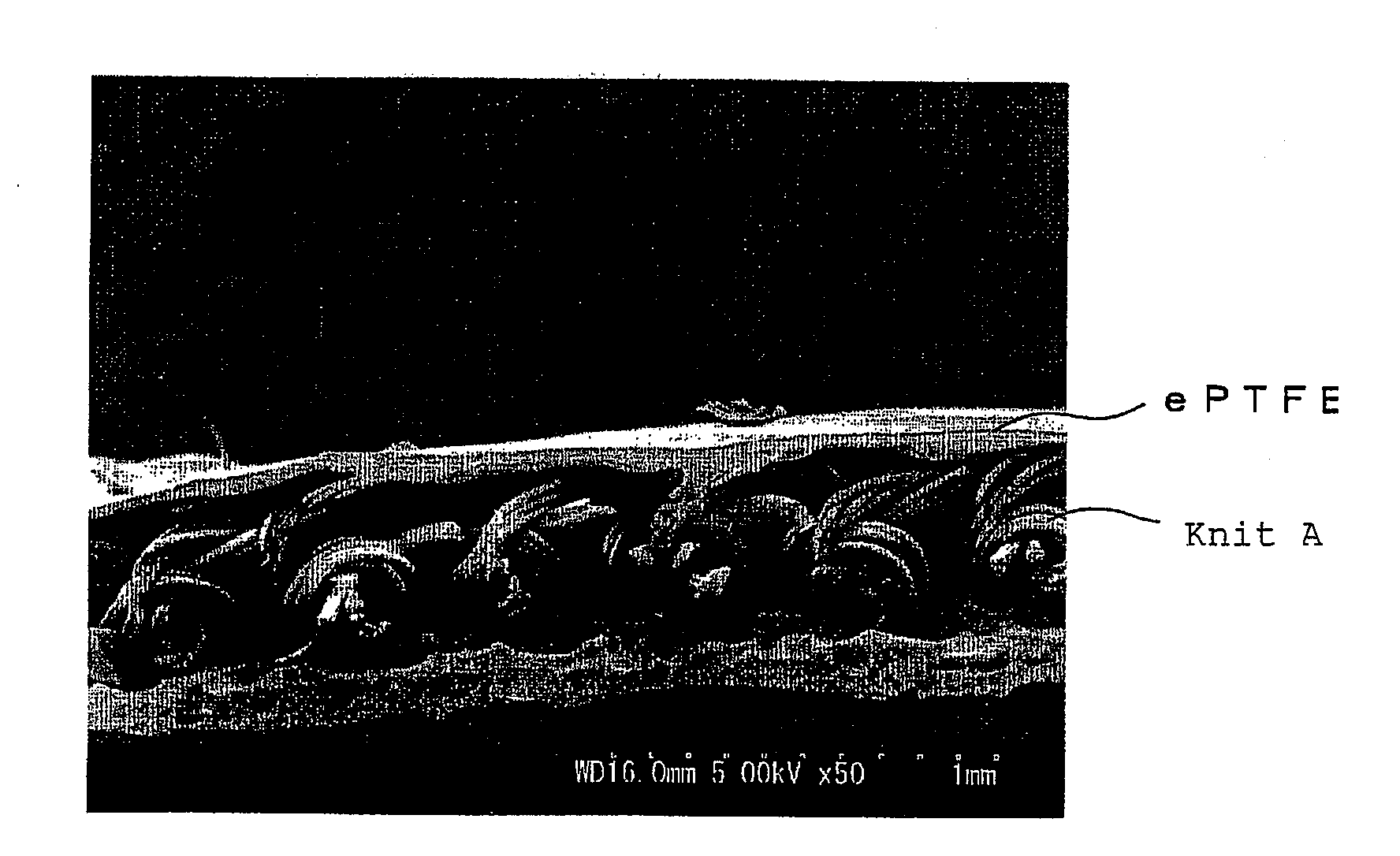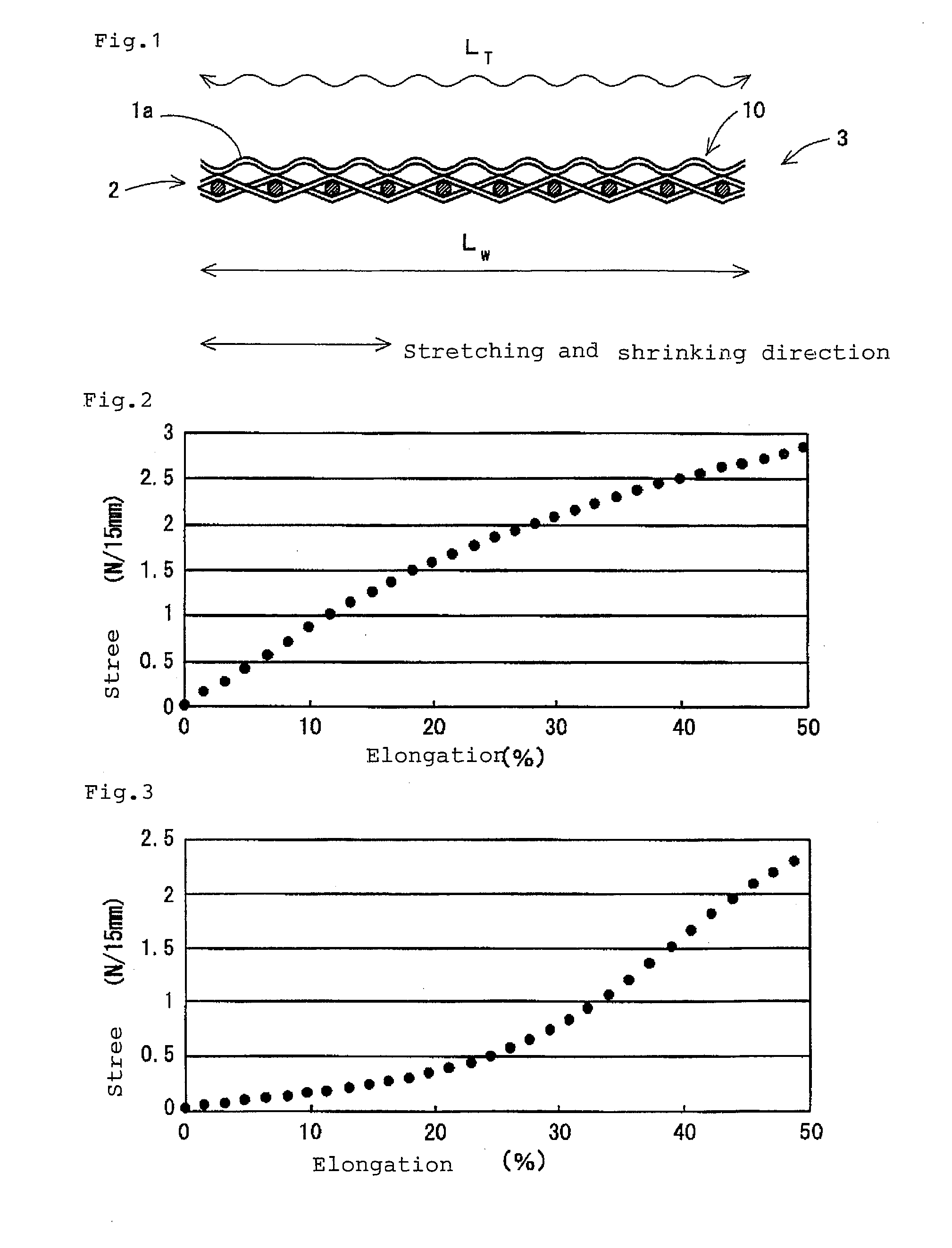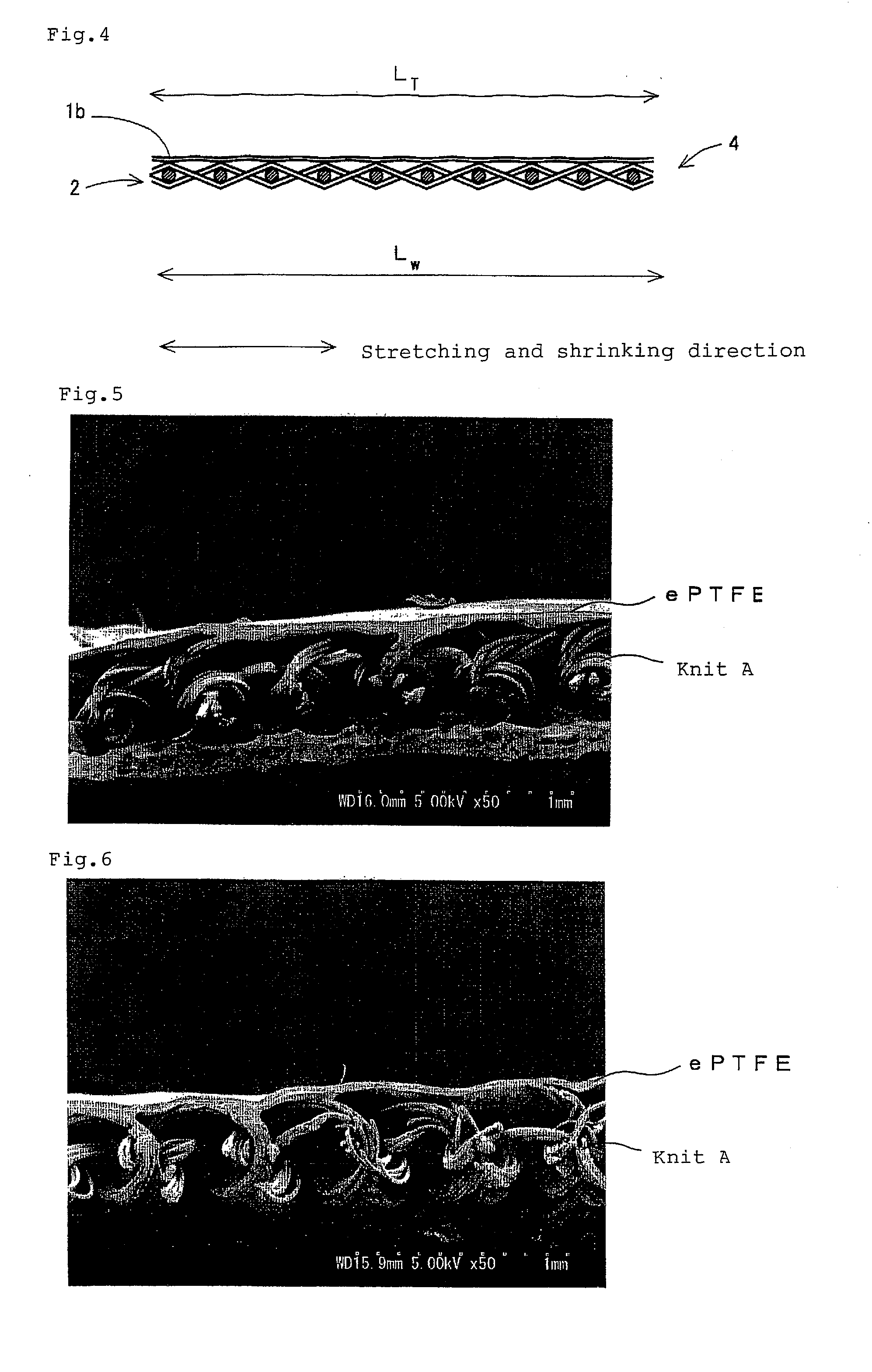Stretch Composite Fabric and Expanded Porous Polytetrafluoroethylene Film
a technology of stretch composite fabric and porous polytetrafluoroethylene, which is applied in the direction of knitting, weaving, straight-bar knitting machines, etc., can solve the problems of lack of cohesive strength at the region, likely delamination phenomenon, and lack of cohesive strength of a surface without stretch resin application, so as to increase the strength and stretch property of the eptfe film
- Summary
- Abstract
- Description
- Claims
- Application Information
AI Technical Summary
Benefits of technology
Problems solved by technology
Method used
Image
Examples
example 1
[0081]To a device equipped with a tenter for extending the width in a heater oven (hereinafter referred to as Device A), a sintered ePTFE film (thickness: 50 μm, maximum pore size: 0.3 μm, porosity: 80%, mass per unit area: 22 g / m2, breaking elongation in a width direction in a tensile test: 260%) manufactured by Japan Gore-Tex Inc. was continuously fed, and the film was stretched in a width direction by the tenter. The film was shrunk by reducing the width of the tenter to 1.05 times the original width thereof in the oven, and the film was removed from the tenter and continuously taken up (the detailed stretching and shrinking conditions are as described in the following Tables 1 and 2). At this time, in order to prevent the occurrence of film necking in a length direction, the film was allowed to travel at an appropriate rate.
[0082]The tensile stress at 10% elongation of the sintered ePTFE film before and after the stretching and shrinking treatments is shown in the following Tabl...
reference example 1
[0083]The same procedure as in Example 1 was performed except that the stretching temperature was changed to room temperature (around 25° C.). The film was torn during stretching, and the stretching treatment could not at all be performed.
example 2
[0084]To one surface of the sintered ePTFE film used in Example 1, a moisture-curable adhesive was transferred in a dotted pattern using a gravure roll (transfer area: 40%), and a knit (mixing ratio of nylon / spandex (mass ratio)=75 / 25, gauge: 28G, mass per unit area: 58 g / m2, elongation in a width direction: 150%, recovery in a width direction: 95%, hereinafter referred to as Knit A) was laminated to this transferred surface, and the resulting laminate was left as such at room temperature until the adhesive was cured by the moisture in the air. The resulting laminate having a two-layered structure was continuously fed to Device A, and stretched in a width direction by the tenter. Then, the laminate was shrunk by reducing the width of the tenter in the oven, and the laminate was removed from the tenter and continuously taken up, whereby a stretch composite fabric was obtained (the detailed stretching and shrinking conditions are as described in the following Table 1).
[0085]The physic...
PUM
| Property | Measurement | Unit |
|---|---|---|
| elongation | aaaaa | aaaaa |
| elongation | aaaaa | aaaaa |
| width | aaaaa | aaaaa |
Abstract
Description
Claims
Application Information
 Login to View More
Login to View More - R&D
- Intellectual Property
- Life Sciences
- Materials
- Tech Scout
- Unparalleled Data Quality
- Higher Quality Content
- 60% Fewer Hallucinations
Browse by: Latest US Patents, China's latest patents, Technical Efficacy Thesaurus, Application Domain, Technology Topic, Popular Technical Reports.
© 2025 PatSnap. All rights reserved.Legal|Privacy policy|Modern Slavery Act Transparency Statement|Sitemap|About US| Contact US: help@patsnap.com



